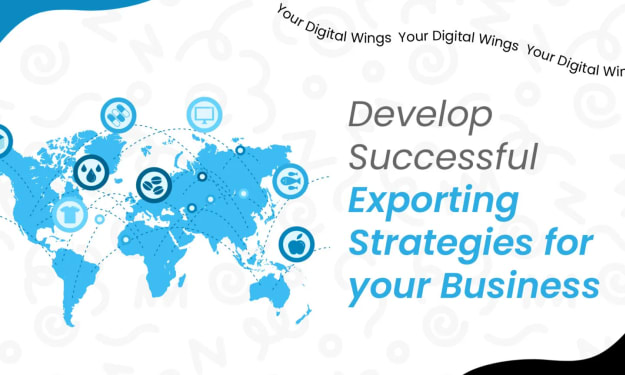The Benefits of Structured Creative Challenges
The surprising liberation of structure

For years, prior to the Covid pandemic forever changing my attitude towards creativity, I had a complex relationship to my own creative nature. Some of this was innate — I’m neurodivergent and have a hard time with executive functioning, particularly initiation and self-monitoring — and some of it was societal — I was bombarded with work and familial obligations, and found it hard to manage to clear, regular, recurring time to do something self-indulgently creative (and even if I did, I was too burned out to generate any ideas as to what to create).
As a result, when I did find myself engaged in a creative pursuit, more often than not it was a structured challenge.
Whether you’ve participated before or not, you’ve likely encountered structured challenges in your creative spaces. If you’re a writer, NaNoWriMo is one of the big ones, with Inktober being one of the better known ones for visual artists. Generally, a structured creative challenge runs for a predetermined period of time (both Inktober and NaNoWriMo are month long, occurring in October and November respectively), and have a set of rules, guidelines, and/or prompts for participants to follow. The expectation is completing certain milestones over the course of the challenge (again, for Inktober it’s one drawing a day, for NaNoWriMo it’s 50,000 over the course of the month).
If you’ve never tried a structured challenge, you might not understand the appeal — why would you want to be producing work based on predetermined prompts that strangers across the internet are completing en masse? And, to be fair, maybe you’re at a stage of your creative development where that’s not remotely appealing to you. Maybe you’d get nothing out of it. But early in my creative journey, I actually found the structure of monthly challenges incredibly liberating for several reasons.
It bypasses decision paralysis.
This is less true with something like NaNoWriMo, but still not wholly absent. Most of the bigger challenges, such as Inktober, Huevenver, Sketchtember, Drawlloween, and NaPoWriMo have official prompt lists. That is, every day (or week, in some cases, depending on how the challenge is run), a predetermined prompt is assigned to participants for that day, with individuals encouraged to provide their own spin or interpretation. For those of us conscious of time constraints (be they external or self-imposed), or who balk at expending the time or energy trying to rack their brains for inspiration, these prompts give you a word that can usually be taken quite literally, but also give you the creative freedom to go where you want with it. It’s a helpful scaffolding that lifts you up, rather than holding you down. For those interested in something like NaNoWriMo, while it doesn’t officially offer prompts, their forums have a recurring thread called “Plot Adoptions” (sometimes “Adopt a Plot”) where people outline basic plot ideas they don’t plan to write themselves and offer them up for free use to people who want to try the challenge, but maybe haven’t had a lot of time to prep. For those of us with executive dysfunction (or even with mental/emotional burnout), it bypasses that absolute mental freeze that comes with task initiation and prioritizing/organization by doing that step for us.
It offers absolute deadlines.
I was a good student in both high school and college — I had to be, given that I was on a scholarship which would have been rescinded if my GPA were to ever drop below 3.5. However, I was not a good student because I was particularly well-organized or because I paced myself well; it was because I became really, really good at putting things off until the last minute, and then making a mad dash to the deadline, usually at midnight while crying and drinking copious amount of Coke. As someone who wasn’t good at budgeting my time, deadlines were often my sole motivator — time, outside of a due date, didn’t really exist for me. Two weeks to get a paper done felt like forever, right up until about six hours before I had to turn it in, when I suddenly became very aware of each tick of the clock. So participating in a one-a-day style challenge, for me, is great, because unlike college — where your rush to the deadline might be a ten page paper you need to get done before midnight — it’s a reasonably sized assignment (a single drawing) with an easily defined deadline that actually comes with a sense of urgency because there is an immediacy to it. I was always better with due-the-next day assignments because “tomorrow” was a much more readily felt deadline than two or three weeks was. “Two weeks” was amorphous and undefinable, but I could manage 24 hours. Since you know your own issues with time management better that I do, you can decide what type of timed challenge works best for you. Daily challenges have been incredibly successful for me for the aforementioned reasons, and weekly challenges seem to depend on what is going on in the broad scope of my life at the time. Play around with various challenges and see which kind best suits you.
It comes with a sense of community and accountability.
One of the hardest things to do is to embark on something you know will be difficult for you without any sort of support network; even if you have family, friends, or partners who are supportive, you are still embarking on the challenge itslef solo, and not having anyone to commiserate with, or draw inspiration from, or bounce ideas off of — well, it kinda sucks. While not all art or creative challenges come with a centralized communal hub, most of them are bound together in some way, either through an anchor blog (with a participating blogroll, or a pre- or post-challenge blog hop, or interaction in the comments sections of posts), or a hashtag on Twitter. Some, in fact, do have that centralized hub, like a forum, or a BBS board, or a Discord. Whatever way the challenge unites participants, unite with them. Announce that you are participating, communicate with other participants, respond to their work. Get to know others, because a sense of community creates motivation and, frankly, generates better work, but also make yourself known, because putting it out there that you are doing this thing creates accountability for you to then actually do the thing. It’s a lot easier to not do something when it’s an entirely internally conceived affair — once you make it known that you are doing something, and people are checking in on you and keeping tabs on you, it makes it a lot more likely that you are going to stick it out.
It gives you a sense of accomplishment and builds creative momentum.
When you successfully finish a challenge, at the end of it, you actually do feel like you accomplished something. Even beyond the physical pieces you create, there is a sense of fulfillment and pride at having seen something through to its end, to have persevered and completed something that may, at times, have felt overwhelming. Beyond that sense of accomplishment, you have now started to build a creative momentum. For those of us for whom initiation is difficult, we often find that once we have initiated, things start moving a lot more smoothly, and we rely on riding that momentum into other projects and endeavors — once we lose that, it’s an entirely new process trying to reclaim it once again. Seeing a challenge through to the end sets you in motion and helps generate a flow state that will then move you through initiating and completing other projects, as well.
In the last few years, my relationship to challenges has changed — I’ve progressed on my creative journey, and the circumstances of my life are different than they were a decade ago. I still find challenges beneficial occasionally, and I still enjoy the camaraderie of the larger challenges, though they are no longer my creative cornerstone.
If you are a beginner on your creative journey, and you find making time, generating ideas, or building momentum to be challenging or overwhelming to start, I would urge you to check out some of the creative challenges and communities on-line. While your participation may not be perennial, trying one, at least once, is a worthwhile experience.
About the Creator
Jess C.
40-something creative -- artist, writer, maker -- parent, and educator. Queer neurodivergent feminist geek. Over-worked, under-slept, over-caffeinated, and over-thinking.
---
Enjoyed the story? Support the Creator.
Subscribe for free to receive all their stories in your feed. You could also pledge your support or give them a one-off tip, letting them know you appreciate their work.






Comments
There are no comments for this story
Be the first to respond and start the conversation.